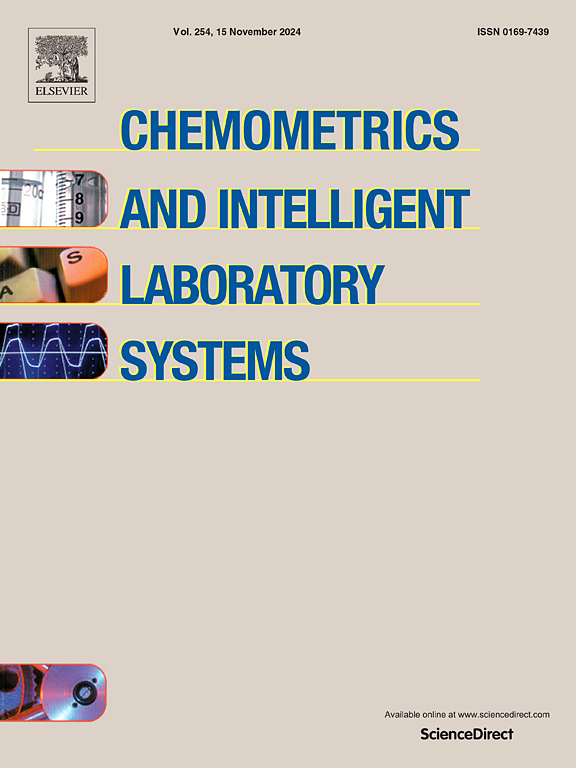基于历史正常样本和故障样本建立的联结概率模型的故障检测方法
IF 3.7
2区 化学
Q2 AUTOMATION & CONTROL SYSTEMS
Chemometrics and Intelligent Laboratory Systems
Pub Date : 2025-04-09
DOI:10.1016/j.chemolab.2025.105401
引用次数: 0
摘要
随着现代信息技术的不断发展,工业过程的数字化、信息化和智能化特征日益突出。控制系统不仅存储反映系统正常运行的大量操作数据,而且还保留与故障有关的数据。不幸的是,由于计算框架的限制,在传统的故障检测过程中,这些与故障相关的信息经常被忽略。因此,故障检测模型可能对正常运行条件下的微小变化过于敏感,而缺乏检测真实故障信号所需的灵敏度。针对这一问题,本文改进了基于vine copula依赖描述(VCDD)的故障检测方法的参数估计过程。传统的VCDD方法是对单个二元联结函数的参数进行顺序估计。本文提出了一种基于葡萄球菌的故障检测方法(VCDD-PCFD),该方法采用全局参数估计方法。该方法采用智能搜索算法,根据故障数据计算惩罚。训练数据集由历史数据库构建,包括正常运行数据和故障运行数据。模型结构通过逐步的VCDD求解过程确定,只利用来自训练集的正常数据。随后,应用粒子群优化算法(PSO)识别所有二元copulas的最优参数,使用包含正常数据的完整训练集评估第一部分适应度,而使用故障数据计算惩罚。将VCDD模型与VCDD- pcfd模型相结合,增强了模型的稳定性,提高了未知故障的检出率。将该双模型检测方法应用于数值算例和田纳西伊士曼基准过程(TE过程),与VCDD等其他故障检测方法相比,证明了该方法的有效性。结果表明,该方法具有较好的检测性能。本文章由计算机程序翻译,如有差异,请以英文原文为准。
Fault detection method based on a copula probability model built from historical normal and failure samples
As modern information technology continues to advance, industrial processes are increasingly defined by their digital, informational, and intelligent characteristics. Control systems not only store a wealth of operational data reflecting normal system functioning but also retain data related to malfunctions. Unfortunately, due to the constraints of the computational framework, this fault-related information is often overlooked during the conventional fault detection process. As a result, the fault detection model may become overly sensitive to minor variations in normal operating conditions while lacking the necessary sensitivity to detect genuine fault signals. To address this issue, this paper improves the parameter estimation process of the fault detection method based on vine copula dependency description (VCDD). Traditionally, VCDD estimates parameters for individual bivariate copula functions sequentially. In contrast, this paper introduces a novel vine copula-based fault detection method (VCDD-PCFD), which utilizes a global parameter estimation approach. This approach employs an intelligent search algorithm that calculates penalties based on fault data. A training dataset is constructed from a historical database, comprising both normal operational data and fault operational data. The model structure is determined through a stepwise VCDD solution process, utilizing only the normal data from the training set. Subsequently, the Particle Swarm Optimization (PSO) algorithm is applied to identify the optimal parameters for all bivariate copulas, using the complete training set with normal data to assess the first part of fitness, while fault data is used to compute penalties. The integration of the VCDD model with the VCDD-PCFD model has strengthened the model's stability and improved the detection rate of unknown faults. The application of this dual-model detection method to a numerical example and the Tennessee Eastman benchmark process (TE process) has demonstrated its effectiveness when compared to other fault detection methods, including the VCDD method. The results show that the proposed method achieves significantly better detection performance.
求助全文
通过发布文献求助,成功后即可免费获取论文全文。
去求助
来源期刊
CiteScore
7.50
自引率
7.70%
发文量
169
审稿时长
3.4 months
期刊介绍:
Chemometrics and Intelligent Laboratory Systems publishes original research papers, short communications, reviews, tutorials and Original Software Publications reporting on development of novel statistical, mathematical, or computer techniques in Chemistry and related disciplines.
Chemometrics is the chemical discipline that uses mathematical and statistical methods to design or select optimal procedures and experiments, and to provide maximum chemical information by analysing chemical data.
The journal deals with the following topics:
1) Development of new statistical, mathematical and chemometrical methods for Chemistry and related fields (Environmental Chemistry, Biochemistry, Toxicology, System Biology, -Omics, etc.)
2) Novel applications of chemometrics to all branches of Chemistry and related fields (typical domains of interest are: process data analysis, experimental design, data mining, signal processing, supervised modelling, decision making, robust statistics, mixture analysis, multivariate calibration etc.) Routine applications of established chemometrical techniques will not be considered.
3) Development of new software that provides novel tools or truly advances the use of chemometrical methods.
4) Well characterized data sets to test performance for the new methods and software.
The journal complies with International Committee of Medical Journal Editors'' Uniform requirements for manuscripts.

 求助内容:
求助内容: 应助结果提醒方式:
应助结果提醒方式:


